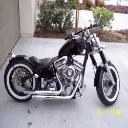Yahoo Answers is shutting down on May 4th, 2021 (Eastern Time) and beginning April 20th, 2021 (Eastern Time) the Yahoo Answers website will be in read-only mode. There will be no changes to other Yahoo properties or services, or your Yahoo account. You can find more information about the Yahoo Answers shutdown and how to download your data on this help page.
Trending News
DC 10 Crash Landing at Sioux City Airport 1989.?
Hi. Does anyone know if the problem of loosing all hydraulic systems in the DC 10 incedent at Sioux City Airport in 1989 has been solved so that loosing all backup systems will never happen again . Thanks.
9 Answers
- strechLv 71 decade agoFavorite Answer
Yes.
Check valves have been installed to prevent one ruptured system from draining the entire hydraulic system.
- RebeccaLv 45 years ago
The engineering flaw in the DC-10 that caused the Sioux City crash was having the lines for all three hydraulic systems running in close proximity underneath the #2 engine, so when that engine suffered an uncontained failure all three of those systems got breached. I think when they designed the MD-11 they did something about that, so IMO a crash exactly like Sioux City would have a very, very low probability of happening. There are still a lot of DC-10's in the air, but virtually all of them have been converted to freighters. Global still has a few in the air in passenger service, but they only do military troop movements.
- stacheairLv 41 decade ago
The original DC-10’s were certificated under part 25 that did not require hydraulic fuses. Part 25 has since been changed to requires hydraulic fuses and several AD’s were issued by the FAA to install hydraulic fuses in older aircraft. New emergency procedures were also written in the aircraft flight manuals. The turbine disk that failed had a flaw and new inspection procedures and manufacturing procedures were put in place.
Several of the early Airbus did not have hydraulic fuses same as the DC-10 to save weight and cost. That has been changed also. The NTSB issued a full report and the report is on there web site at: http://www.ntsb.gov/
- YesugiLv 51 decade ago
Similar (hydraulic control loss) happened with the Concorde crash in 2000. Nothing's "fail-safe," but, as others here have noted, significant measures have been taken.
Every safety improvement has a cost, which needs to be weighed against the probability that the benefit will be realized. The safest airplane is one that never flies, but...
- How do you think about the answers? You can sign in to vote the answer.
- sherijgriggsLv 61 decade ago
actually, it was nothing short of a miracle that the pilot of that flight was able to rough land that huge jet using everything else but those hydraulics. They say it was impossible to keep that bird in the air the way that pilot did. They are not even able to use that type of incident in a flight simulator. There were a lot of angels around that day to help all the souls who did survive, including that courageous pilot and copilot and one other person who were present in the cockpit.
There will never be any way to ensure that there will not be any future tragedies in regards to that particular type of mechanical failure. That isn't logical. As long as humans are designing and maintaing any type of machinery on this planet, there is going to be mistakes. It is just your luck of the draw if you don't end up in that automobile, boat, train, plane, etc....there are no true guarantees.
- DT3238Lv 41 decade ago
In addition to the hydraulic fuses described above, all new airplanes have to be designed with separation of key systems so that a single threat event such as tire burst, engine rotor burst, etc., won't disable the airplane from continued safe flight and landing. So all newer airplanes like 777 or 787 etc. should not be able to have this kind of failure.
- 13th FloorLv 61 decade ago
In addition to the measure indicated by 'strech' above, engine
inspection procedures where upgraded, so that the smallest of cracks from metal fatigue could be more easily detected. Both measures were a direct result from this accident.
But, as the first person noted, nothing can ever be 100% fail-safe. There are just too many potential variables/scenarios.
- Anonymous1 decade ago
Yes, they were all retrofitted or removed from service. The problem should not re-occur.
Note: The USAF KC-10's had identified that single point failure and corrected it prior to the accident and they were the mod kit essentially. It was expensive but necessary.
Ret. USAF SNCO







